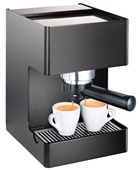By Donna Blaber
Stop energy bills burning a hole in your pocket. Summer is the perfect season to complete a home energy audit; there's a year's worth of power bills stacked up so you can see exactly what you've spent, and the longer daylight hours provide the time to complete a range of minor alterations.
- Find and fill exterior gaps in your home – the walls, foundation, roof, and ceiling.
- Inspect your insulation. No part of the building envelope should be ignored.
- Check on phantom loads, the power electrical devices draw, even when they're switched off.
- Install power boards for larger devices such as printers, routers, desktop computers and TVs.
- Check the hot water system. The temperature should be set on an economical 60 degrees Celsius.
- Check the shower flow rate, a job easily achieved with a stopwatch and a 10 litre bucket.
- Install a heated towel rail timer and save up to $50 a year.
- Assess potential power savings using the online calculator at www.whatsmynumber.co.nz
- Turn off all devices operated by remote control, and all appliances with LED lighting.
- Calculate your savings from phantom loads by adding up your power bills over the past year, multiply the total by five percent, then divide this amount by two.
There are a number of inexpensive steps you can take to make your home more energy efficient, resulting in instant savings, and major savings over time. The savings you are able to make depends entirely on how inefficient your home currently is, and the number of improvements you're prepared to undertake.

The first step in an energy audit is to find any gaps in the exterior of your home – the walls, foundation, roof, and ceiling. In older homes, tiny cracks can often be found around doors and windows, where the exterior walls and the floor meet, and around pipes or wires where cables for the phone and TV have been installed.
Unsealed, these gaps allow warm air to escape, and cold air to enter during the winter months; the reverse is also true in summer, particularly in air-conditioned homes. For a quick and budget-friendly fix, small cracks can be easily filled with a caulk gun, or larger openings filled with a foam applicator.
Remember to check around electrical outlets, light switches and recessed lighting, and house fans, which are a major source of heat loss during the winter. If you have trouble locating gaps, try this trick: wait until a windy day, then use a stick of burning incense, to locate the source of cold draughts.
The second step in an energy audit is to inspect your insulation. No part of the building envelope – the barrier between you and the great outdoors – should be ignored. Check inside foundation walls and the underside of the bottom floor, as well as the loft and ceiling. If you live in an older home, chances are that it will be under-insulated, and this lack of insulation, combined with rising electricity prices provides some explanation as to why your energy bills have been so high.

Outer walls should also be checked for insulation and an easy way to do this is to turn off the power at the mains, then remove the cover plates on electrical outlets to take a look. However, you need to bear in mind that electricians often trim away insulation when they install an outlet, so you may need to remove more than one to complete a proper check.
If further insulation is required, there are many options to choose from and savings to be made; many New Zealanders are currently entitled to receive up to $1,300 towards the cost of installing insulation. The next issue of Renovate magazine will feature in-depth coverage of these entitlements.
The third step in an energy audit is to check on phantom loads, or in other words the power electrical devices draw, even when they're switched off. Stereo equipment, TVs, satellite receivers, DVD players and cordless phones, all continue to use electricity long after they've been turned off. Another culprit is battery chargers; iPod, notebook and rechargeable drill battery chargers also continue to draw power even when the battery has completed charging.
Transformers for printers, fax machines and even coffee makers are also energy villains, as they continue to draw power 24/7, even when they're not in use. Incredibly some devices like satellite receivers can use nearly as much power while they are turned off (but are still plugged in), as they do when they are turned on!
But not all phantom loads are bad. Some equipment, for example SKY and programmable DVD recorders are actually hard at work recording programmes. If you switch these devices off, programmes are not recorded.
Another gadget to treat cautiously is the garage door opener – the remotes for these require a small input of electricity to keep operating; certainly something to bear in mind if you're going away for any length of time. But other displays like the LED clocks on microwaves and coffee-makers, are useless and can be turned off, unless you actually use them to keep track of time.
Eliminating phantom loads is so straight forward that you'll be left wondering why you didn't banish them from your home years ago. As a general rule of thumb if you simply turn off any device that's operated by remote control, or any that have an LED light that stays on all of the time, you'll make instant savings. But to do the job well and make more significant savings, it's best to purchase a digital power meter. To test each appliance you simply plug the meter into the wall, plug in the appliance or device you want to check, make sure it is switched off (but the power is switched on at the wall) and watch the meter. If there's a phantom load the meter will show its size in watts and amps.
Once the loads have been identified, you can employ any number of strategies to manage them. For example power boards work well for larger devices such as printers, routers, desktop computers and TVs; once installed a quick flick of a single switch stops power flow to all.

Other electronic devices such as microwaves work well with an electrical outlet that's controlled by its own on-off switch (a switch and receptacle), which when turned off, terminates the flow of electricity to the plug, therefore turning off anything plugged into the outlet. Items such as battery chargers for personal electronic devices should simply be unplugged when they are not in use.
Individually phantom loads are small but altogether they add up to about five percent of a household's overall electrical demand – a sum which can easily be halved with an energy audit. To make a quick calculation of the savings you can make on phantom loads alone, add up your power bills over the past year, multiply the total by five percent, then divide this amount by two.
As everyone wants to live in a home that is warm, comfortable and healthy – but without high energy bills – any changes you make is money well spent. The savings you make over time can be put towards other home renovations – so make the most of the long daylight hours and give your home an energy audit this summer.
In Hot Water
While you're performing an audit, it's also worth checking your hot water system. Check that the temperature setting on the thermostat is set correctly at an economical 60 degrees Celsius, and that the cylinder itself is well wrapped up in a cylinder wrap. If not, these can be purchased at any hardware store – or if your budget is really tight, use an old blanket to cover the cylinder in the interim. Ideally, all hot water pipes should also be insulated.
Next, hop into the shower to check your shower flow rate, a job easily achieved with a stopwatch and a 10 litre bucket. Simply time how long it takes to fill the bucket at an average showering temperature, and that's your flow rate.
Compare this figure to contemporary shower heads to see if any savings can be made. While you're in the bathroom it's also worth considering installing a heated towel rail timer which can save up to $50 a year; prices for timers start from $30, and require an electrician to install.
 This home renovation article featured in issue 001 of New Zealand Renovate magazine – New Zealand's first and only magazine solely dedicated to home renovations. Article by Donna Blaber.
This home renovation article featured in issue 001 of New Zealand Renovate magazine – New Zealand's first and only magazine solely dedicated to home renovations. Article by Donna Blaber.









Join the Discussion
Type out your comment here:
You must be logged in to post a comment.